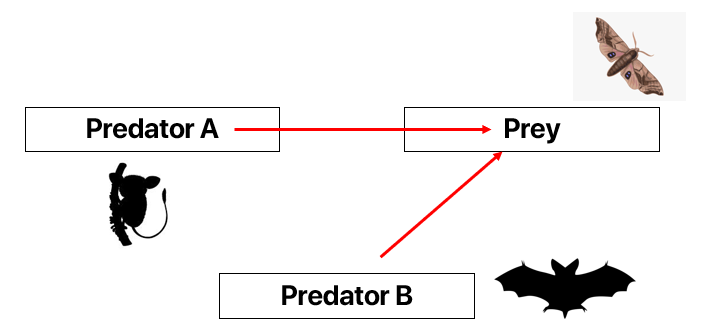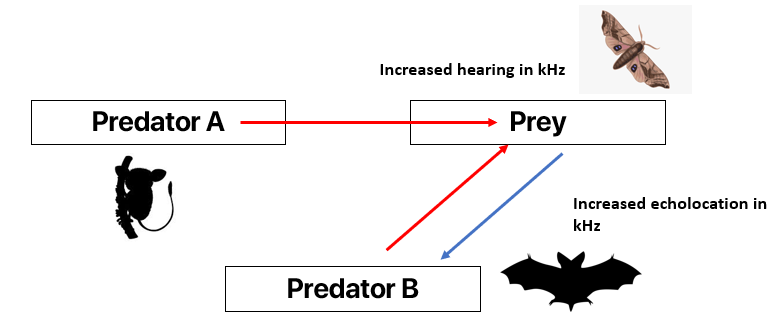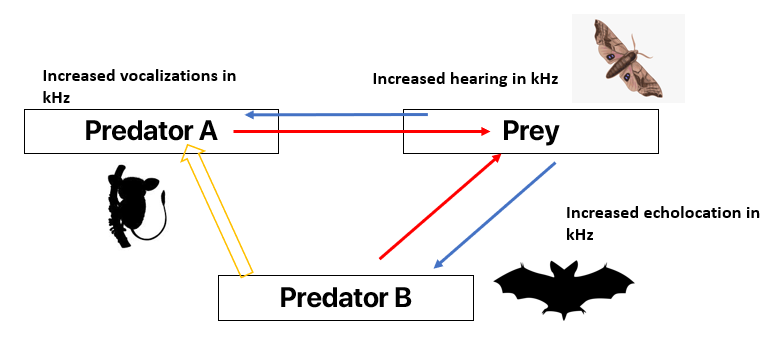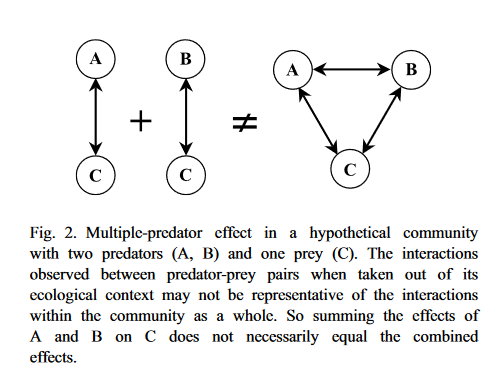Happy #DarwinDay
One of the more underrated and therefore understudied phenomenons in evolutionary theory are indirect effects. Adaptations are not simply the sum of problems and solutions to one-to-one interactions that an organism may have in its environment, but
One of the more underrated and therefore understudied phenomenons in evolutionary theory are indirect effects. Adaptations are not simply the sum of problems and solutions to one-to-one interactions that an organism may have in its environment, but
are often rather the products of a sum of the rich interactions that take place in an environment itself, often not involving the organism itself.
Consider the following example with Predator A, Predator B, and a Prey Species. Both species of predator prey on the same species of prey. In this case neither species of predator directly interacts with each other aside from their association with the species of prey.
Consider a scenario in which the prey species evolves an anti-predator strategy in response to one, but not both predators. In this case, let's imagine the hearing sensitivity of moths increase in response to high-frequency bat echolocations.
Although moth hearing has not evolved due to interactions with Predator A, a tarsier, increased hearing sensitivity nonetheless leaves the tarsier out of luck in terms of detection. Pred A has no choice but to adapt, being dragged along by Pred B and the Prey's sensory arms race.
As an evolutionary puzzle, the reasons as to why the tarsier's vocalizations are so high (the highest of any terrestrial mammal and higher than many bats) are unclear. Some have proposed the tarsiers themselves are echolocating (unlikely), others have proposed that these high
frequency calls are a way to evade predator detection themselves. Yet the alternative that tarsiers are being dragged along by a sensory arms race which they themselves are not a part of still exists.
Consider that Taman Negara national park in Malaysia is 130 million years old, twice the amount of time which has passed since the dinosaurs went extinct. It is difficult, if not impossible, to begin to describe the historical processes which shaped how those forests came to be.
Imagine the primordial forest, shaping and being shaped by towering reptiles which left 65 million years ago and are no longer physically on the landscape. Nevertheless their presence is felt in the selective forces between forest itself and the animals within it.
Orangutans' advanced cognition, for example, being a potential adaptation to the bizarre flowering patterns of dipterocarps in the Malay Archipelago.
Indirect effects certainly shaped the behavior of many species today, but being neither straightforward nor easily falsifiable, systems approaches to natural selection are severely under explored, leaving us with unexplained adaptations and mere shadows of what caused them.
For anyone interested in further reading, the first paper that got me started thinking this way was DeWitt & Langerhans 2003.
https://www.sciencedirect.com/science/article/abs/pii/S1385110102002204
https://www.sciencedirect.com/science/article/abs/pii/S1385110102002204

 Read on Twitter
Read on Twitter





